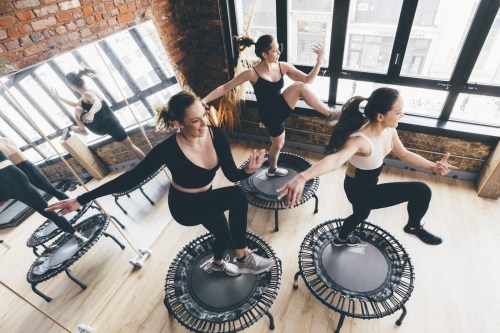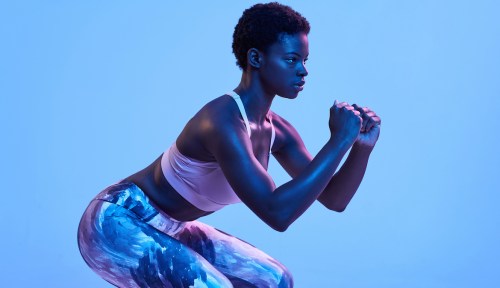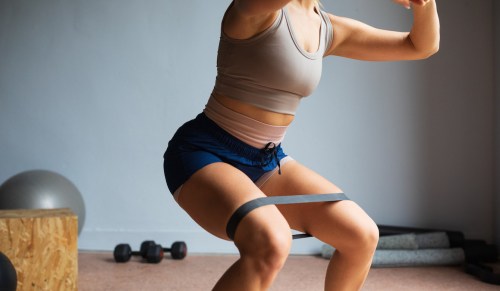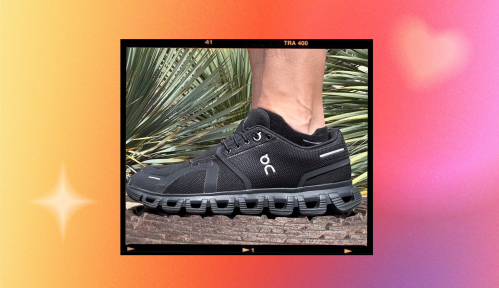Our editors independently select these products. Making a purchase through our links may earn Well+Good a commission
If I sat and wrote out out all of the benefits associated with exercising, we’d both be here all day. But one thing that I recently learned can be added to the endless laundry list of “why working out is good for you,” after “building strength,” “boosting your mood,” and “helping with sleep”? Physical activity aids in lymphatic drainage. Yes, lymphatic drainage exercises are a thing.
Experts in This Article
certified fitness instructor, professional dancer, and co-founder of The Ness
board-certified family medicine doctor and author
program director at Stretch*d
yoga instructor
performance and longevity doctor, and author of Thrive State: Your Blueprint for Optimal Health, Longevity, and Peak Performance
What is lymphatic drainage?
Backing up for a second, what even is the lymphatic drainage? Think of the lymphatic system as a series of pipes that remove waste from your body, explains Kien Vuu, MD, a triple-board certified physician, founder of VuuMD Performance and Longevity, and author of Thrive State. It moves a clear fluid, called lymph, throughout our tissues and organs. While the lymphatic system can operate just fine on its own, he adds that there are practices we can adopt to make it work more efficiently, which is sometimes referred to as lymphatic drainage. Methods include getting lymphatic drainage massages, taking certain supplements, jade rolling, and—you guessed it—doing lymphatic drainage exercises.
According to Dr. Vuu, all of us can benefit from lymphatic flow enhancement, given that lymphatic system health is crucial for optimal well-being. However, he notes it’s particularly beneficial for people looking to support their immune systems. Also, C. Nicole Swiner, MD, a board-certified family medicine doctor and author, adds that people who deal with swelling (aka edema) in their extremities can also benefit from lymphatic drainage practices to help reduce it.
How lymphatic drainage workouts support the lymphatic system
Are lymphatic drainage exercises actually effective? According to experts, the answer is a resounding yes.
Moving your body, in general, is great for the lymphatic system since it helps fluid in the body travel to where it’s supposed to go. “Fluid tends to collect downstream [in the extremities] due to gravity, so walking, exercising, or elevating parts of the body helps to pump it back up,” Dr. Swiner explains. Physical activity promotes circulation and causes muscle contractions, which can support the natural processes of the lymphatic system, Dr. Vuu adds.
“Lymphatic drainage workouts can stimulate the flow of lymph,” Dr. Vuu says. Particularly, he recommends trampoline exercises, yoga, and dynamic stretches to help promote lymphatic drainage.
So, if you’re committed to the cause, these workout moves can help get your lymphatic system moving.
Lymphatic drainage exercises on a trampoline
Consider this the most fun way ever to help get your lymph system moving. Bouncing on a trampoline harnesses both the effects of gravity and your body’s muscle contractions to stimulate the flow of lymph, says Aly Giampolo, founder of the ness, a studio in New York City that offers trampoline classes.
Dr. Vuu also gives trampoline workouts his seal of approval. “They allow for unique movements that can increase the circulation of lymph fluids, while also being joint-friendly due to the trampoline’s shock-absorbing nature,” he says.
Giampolo suggests trying these three trampoline exercises for lymphatic drainage:
1. Bounce down: “Bouncing down” is the basis for most moves on the trampoline, and is pretty much exactly what it sounds like. “In this movement, the body is in a squat position with heels driving down into the trampoline. Use the core to lift knees into the center while keeping the upper body low,” explains Giampolo. In other words, jump on the trampoline in a squat, squeezing your core and glutes while you do it, and think about bouncing down instead of jumping up.
2. Surf twist: Surfs up, lymphatic drainage down. In the same squat form that you’d use for bouncing down, twist your lower body to the right, then back to the center, then to the left, and repeat, keeping your shoulders squared to the center the entire time.
3. High bounce: “This is what you would normally imagine when you think of jumping on a trampoline,” says Giampolo. It’s essentially the opposite of bouncing down, so that you’re pushing your body up and away from the trampoline.
Lymphatic drainage exercises on the yoga mat
Mat-based lymphatic drainage yoga is another form of lymphatic drainage exercise that Dr. Swiner and Dr. Vuu say can help move fluid. “Yoga stimulates all the systems of the body, from the nervous system to the respiratory system to the lymphatic system,” says yoga instructor Kajuan Douglas. “The poses of yoga, complemented by the breathwork, support the filtration of the body.” Here, he shares three poses to help get the job done.
1. Legs up the wall: Lying on your back with your glutes next to a wall, extend your legs up toward the ceiling, and rest the back of your heels and legs on the wall.
2. Apanasana (wind relieving pose): While laying on your back, hug your knees tightly into your chest while squeezing your inner thighs together and contracting the low abdomen towards the back of the body. If possible, try drawing your forehead toward your knees.
3. Modified sun salutations: “Modified sun salutations are a great way to rhythmically flush the body,” says Douglas. “The series of lunges and forward folds will help circulation.” Try this sequence: mountain pose to upward hands pose to standing forward fold to downward-facing dog to down dog split to low lunge to standing forward fold to upward hands pose to mountain pose. Or, if those terms mean nothing to you, go ahead and do a classic sun salutation, following this demo:
Low-key lymphatic drainage through stretching
Dr. Swiner and Dr. Vuu say stretching also promotes optimal lymphatic system flow. However, Dr. Vuu notes that it is dynamic stretching, in particular, that is beneficial for lymphatic drainage, since they involve constant motion. “Such stretches promote blood flow to muscles and tissues, aiding in the faster removal of lymphatic fluids,” Dr. Vuu says.
“This means that the muscles and tissues that the lymphatic system is supporting are getting more blood flow, which ultimately helps to move the lymphatic fluids out of the system faster,” says Jeff Brannigan, the program director at Stretch*d. Try these three moves:
1. Hello hammies: Lying on your back, place your foot into a belt or strap. Lift your leg until your thigh is perpendicular to the floor, and gradually extend your leg by contracting your quadriceps—the goal is to lock your knee and fully extend your leg. If you can’t reach the full extension, you may have to lower the angle of your leg from your hip to make things easier. (Be sure to avoid irritating the back of your knee.)
2. Smooth walk*r 1: Lying on your back, place the ball of your foot into a belt or strap. (To get the pressure off of your back, you may want to bend your other knee and place the foot flat on the floor.) Flex your foot by bringing your toes toward your chest, and use the rope for gentle assistance at the end of the movement. After a brief stretch, relax by pointing your foot toward the ceiling, and repeat.
3. Smooth walk*r 2: Sit with one leg resting straight and flat in front of you, and bend our other knee out to the side at a 90-degree angle with your foot flat against your inner thigh. Reach down and grab the bottom of the front foot with both hands, or if you need to modify, with a belt or strap. Keeping your heel on the floor, flex your foot toward your chest, using your hands for assistance.
Lymphatic drainage exercises FAQs
What causes a clogged lymphatic system?
The lymphatic system usually works fine on its own. But it can get clogged by “a faulty valve in the blood vessels or the heart or a blockage in the vessels of some sort,” Dr. Swiner explains. Common signs and symptoms of a clogged lymphatic system include swelling, pain, redness, and thinning or cracking open of the skin from stretching, she adds.
Where does lymphatic drainage go?
Real talk: When you drain something, let’s say your tub after a bath, the fluid has to go somewhere, right? So when you do things to promote lymphatic drainage, such as lymphatic drainage exercises, where exactly does the fluid go? Generally, Dr. Swiner says, it goes back up to the heart to flow back through the body. Side note: Pee after a massageis also a side effect of lymphatic drainage.
What exercises stimulate the lymphatic system?
To recap, any activity that gets your body moving and grooving will support your lymphatic system. “Anything that pumps or moves the muscles of the legs,” Dr. Swiner says. But if you’re looking for specific exercises for lymphatic health, Dr. Vuu says the trampoline exercises, yoga poses, and dynamic stretches mentioned above are all effective ways to stimulate the lymphatic system. There are also foam roller lymphatic drainage exercises and even lymphatic drainage for acne you can try as well.
Sign Up for Our Daily Newsletter
Get all the latest in wellness, trends, food, fitness, beauty, and more delivered right to your inbox.
Got it, you've been added to our email list.











